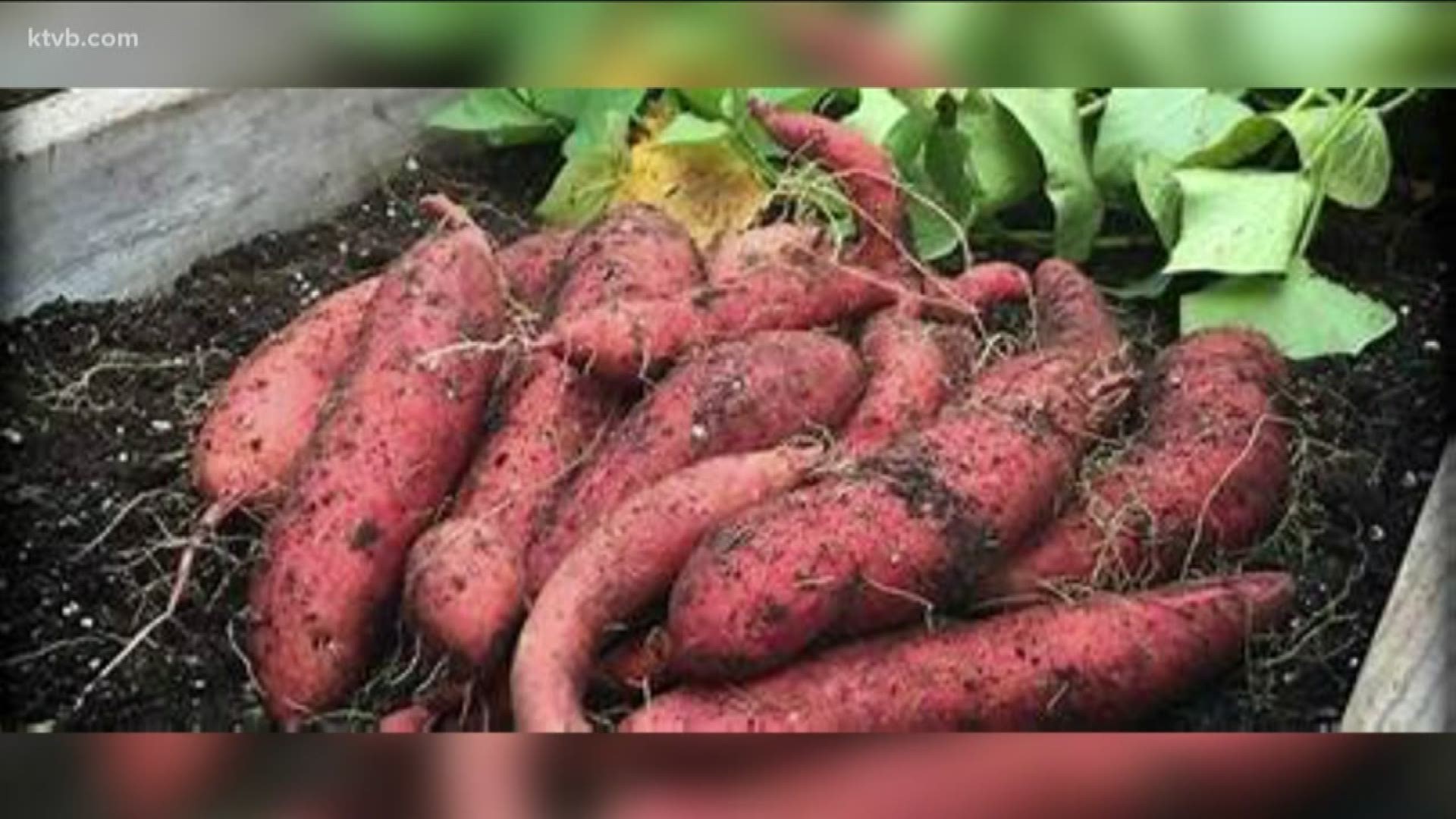BOISE, Idaho — We all know that potatoes are a big crop here in Idaho, but have you ever tried growing sweet potatoes? Believe it or not, sweet potatoes aren’t really related to the regular potatoes we’re all used to. But sweet potatoes are easy to grow and make a beautiful plant in your garden.
Garden master Jim Duthie shows us how to grow sweet potatoes, and tells us what the difference is between sweet potatoes and yams. Either way, they’ll make a delicious addition to your garden.
Idaho is known for its potatoes, and many of us grow them in our home gardens. But today we’re going to talk about growing sweet potatoes. Not only will you end up with delicious sweet potatoes later this fall, but the plants themselves are really beautiful, too.
So what’s the difference between a sweet potato and a yam? Chances are that you’ve never even eaten a real yam. True yams come from the Caribbean and they look and taste a lot different from sweet potatoes.
What we get at the grocery store or the produce stand are actually two kinds of sweet potatoes.
One kind is called a firm sweet potato, and it has a golden skin and a white or yellow flesh. They’re good for baking. The other kind is called a soft sweet potato, and it has a coppery colored skin and an orange flesh. These are the ones we typically use for sweet potato casseroles and pies.
You can also buy them canned, and even though they’re really sweet potatoes, they’re sometimes labelled as yams. Confused yet? Well, no matter whether you call them sweet potatoes or yams, they’re easy to grow, either in the ground or in containers.
Sweet potatoes aren’t grown from seeds, but from sprouts on the potato called slips. The slips are then removed and allowed to grow roots of their own. You can buy sweet potato slips at some area nurseries already rooted and ready to plant. Or you can start your own.
One way is to cut the sweet potato in half lengthwise and lay it cut side down in some moist potting soil. After a time the sprouts will start to grow.
An easier way is to take a sweet potato and set it in a glass of water. I poked toothpicks around this one so it the top half would stay above the water. Soon little slips begin to grow. Lots of people sprout sweet potatoes this way to produce beautiful houseplants and hanging baskets.
Once the sprouts, or slips, get to be several inches long and are covered with leaves, you can carefully remove them from the sweet potato and place them in another glass of water to root. In just a couple of weeks you’ll have several sweet potato slips, fully rooted and ready to plant. Once the danger of frost has passed, they’re ready to plant in the garden.
If you’re planting them in the ground, make sure the soil is well tilled and loose. I’m planting mine in a couple of large containers in some loose potting mix. I’ll only plant a few in each pot, so there will be plenty of room for the potatoes to grow.
First, make holes about six inches deep, spaced several inches apart.
Then bury the slips up to the top leaves, and press the soil down gently but firmly. Make sure to water them well. Sweet potatoes like moist soil, but they don’t want to be soggy.
Sweet potatoes need full sun, and unlike regular potatoes that don’t mind the cooler weather of spring, sweet potatoes need warm soil and warm weather.
Later in the summer, sweet potato vines will produce flowers that look like morning glories.
In the fall, and before the first frost, when the vines start to turn yellow, it’s time to harvest. Gently loosen the soil and pull the plant completely up, along with the potatoes, and then carefully dig around to pull up any remaining buried potatoes.
Let the potatoes cure by setting them in a warm, dry location for about ten days, even outside in the sun. That allows the skin to harden a bit, and for the flesh to turn even sweeter.
Properly cured, your homegrown sweet potatoes will last for several months in a cool, dry place. And you’ll be able to use them in all sorts of delicious dishes. Until then, enjoy the beautiful plant through the summer.
If you haven’t grown your own sweet potato slips, you can find them now at many garden centers and nurseries ready to plant outdoors. But hurry, because they’ll disappear quickly.
Watch more You Can Grow It:
See them all in our YouTube playlist here:

